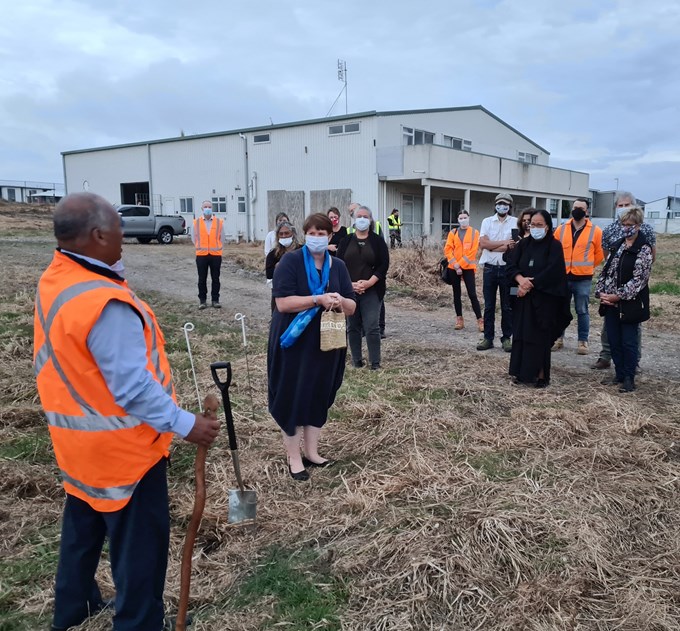Work is set to begin to develop the first stage of a sustainable sports park in Hobsonville.
The Scott Point site has been blessed by kaumatua Richard Nahi, with Ngā Maunga Whakahii o Kaipara Development Trust, Auckland Council elected members and staff, and HEB Construction representatives in attendance.
Funded by Auckland Council, the initial work will cost $16 million and take 14 months, delivering two football fields, a baseball diamond, carpark, paths, toilets and changing facilities, and new roads at Joshua Carder Drive and Craigs Way.
Upper Harbour Board Chair Lisa Whyte says the 16-hectare park will be developed over several years as funds become available.
“The large park will serve a huge catchment area, and benefit locals and the regional sporting community. It is going to be the heart and lungs of a fast-changing area.
“As New Zealand’s first fully sustainable sports park, it has a large conservation area on the park’s eastern side alongside sports and recreation areas.
“Students will be able to use the Craigs Way shared path, a safe passage that will also cut down on car travel near the school.”
HEB Construction spokesman David Simpson says the company is delighted to be partnering from design to delivery with the council and others on the project.
“Scott Point will lead the way in environmentally-conscious design, delivery and operations.”
The park has already received a Leading Infrastructure Sustainability Design Rating from the Infrastructure Sustainability Council.
Auckland Council parks head Mark Bowater says the project will use that to guide and measure sustainability throughout the build.
“Well-before site clearing, ecological activities involved catching and relocating skinks, transplanting 33 trailer-loads of native Epilobium plants and potting up hundreds of the critically threatened plants for ecological groups to replant in other areas.
“Epilobium hirtigerum, other plants and wildlife are part of the park’s conservation site, listed as a Significant Ecological Area in the Auckland Unitary Plan,” he says.
Mulch from felled trees is being stockpiled for landscaping, while building materials are being shared with community groups, recycled or reused within the park, or at other sites.


